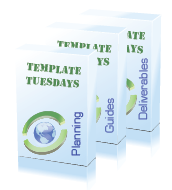
Editors Note: This release notes template is one in a series of templates to help readers plan and manage communications and content management activities, resources and deliverables. We welcome ideas and suggestions for other Template Tuesday materials.
Summary
- Companies prepare Release Notes to provide the latest information about new features, enhancements to existing features, and defects fixed.
- The Release Notes document plays a key role in customer experience management, because it demonstrates to customers that their feedback has been received and implemented.
- The Release Notes document typically supports traditional product development environments, but the concept of providing the latest information on the current version of a product is applicable wherever a formal release cycle is maintained.
 Definition:
Definition:
The Release Notes document provides the latest information about new features, enhancements to existing features, and defects fixed. The Release Notes can be as short as a few lines of text (example: an app update) or many pages, depending on a given company’s release management process.
Purpose:
The Release Notes document plays a key role in customer experience management, because it communicates to the customer that their feedback has been received and implemented (or is in development). Release Notes are most often used with software applications, but can be customized to fit the documentation suite for a variety of highly engineered products.
Relevance:
The Release Notes document is typically used in traditional product development environments, but the concept of providing the latest information on the current version of a product is applicable wherever a formal release cycle is maintained. No matter how short or long the Release Notes document, clarity in the text is important. Keep the explanation clear, and include steps or procedures where warranted.
Using the Template:
This Release Notes template is designed around four separate sections. You can remove sections as needed, based on your company standards and procedures.
- Determine the sections you’ll use.
- Determine how much content to include in each section. For example, your department may not include “internal only” defects in the Fixes section, since a user is not likely to encounter that type of issue.
- Download the Release Notes template and save to a local location.
- Customize headers and footers, as well as other styles according to your company’s guidelines.
- Develop the content and compile it into the template.
- Test the Release Notes.
- Revise the content in the Release Notes.
- Produce the final draft, and publish to the delivery format(s) of choice (e.g., PDF, web page, eBook, etc).
- Follow organizational policy and guidelines on document retention to manage draft versions, and subsequent revisions.
- Obtain feedback, evaluate, and revise the content as applicable.
You may want to download the User Guide Template to ensure your documents are well synchronized.
Download: Release Notes Template (141 kb – Microsoft Word)
Do you have other user guide templates that work well for the products you are documenting? Are you in an Agile development environment and have tools for creating user assistance that aligns with Sprints? Feel free to contact us and submit your templates. We’ll provide credit to you for assisting the TechWhirl community and contributing to Template Tuesdays.